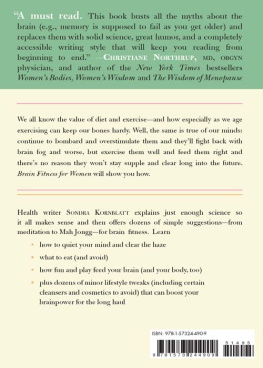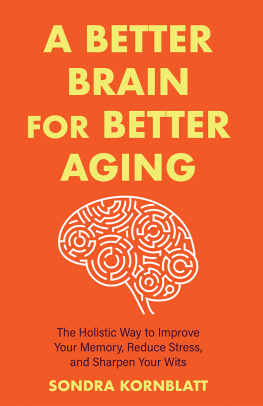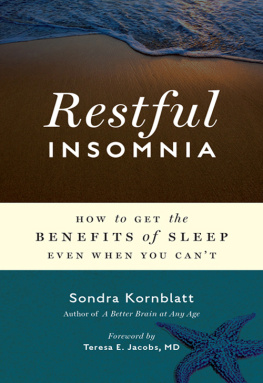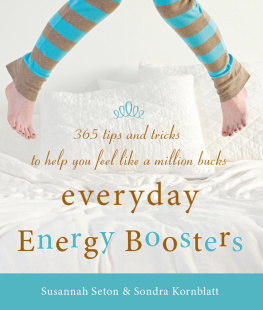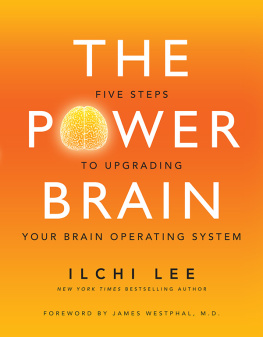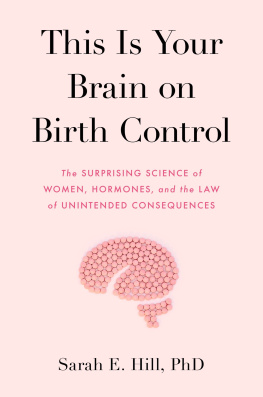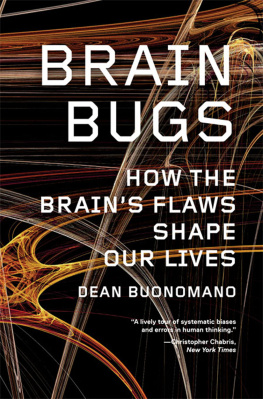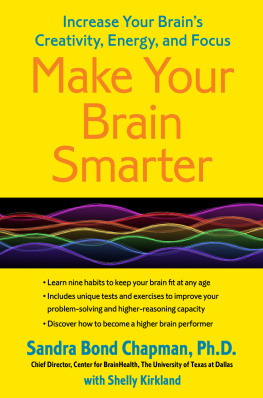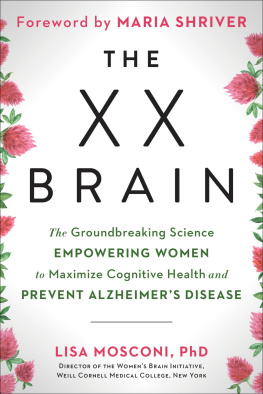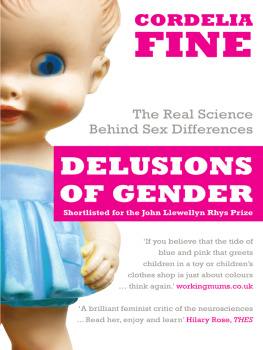

First published in 2012 by Conari Press, an imprint of Red Wheel/Weiser, LLC
With offices at:
665 Third Street, Suite 400
San Francisco, CA 94107
www.redwheelweiser.com
Copyright 2012 by Sondra Kornblatt
All rights reserved. No part of this publication may be reproduced or transmitted in any form or by any means, electronic or mechanical, including photocopying, recording, or by any information storage and retrieval system, without permission in writing from Red Wheel/Weiser, LLC. Reviewers may quote brief passages.
ISBN: 978-1-57324-490-9
Library of Congress Cataloging-in-Publication Data
Kornblatt, Sondra.
Brain fitness for women : keeping your head clear and your mind sharp at any age / Sondra Kornblatt.
p. cm.
Summary: Did you know that women have 70,000 thoughts per day and one person's brain generates more electrical impulses each day than all the telephones in the world combined?In Brain Fitness for Women, health writer Sondra Kornblatt offers an entertaining look at how women's brains work: the physiology of women's brains, new research in neuroscience, the differences between women's and men's brains, and how women's brains age. Kornblatt offers fun facts (yep, that chocolate youre craving does boost cognitive function), tips (your brain wants a glass of water in the morning), and advice (forget multitasking, the brain can only process one thing at a time) for women who want to keep their minds in tiptop shape. She examines how hormones, the environment, exercise, stress, food, aging, and even friendship affect the brain, and offers strategies for keeping your brain on its metaphorical tiptoes at any age-- Provided by publisher.
Includes bibliographical references and index.
ISBN 978-1-57324-490-9 (pbk.)
1. Brain--Sex differences. 2. Women--Health and hygiene. I. Title.
QP376.K655 2011
612.82082dc23
2011036141
Cover design by Nita Ybarra
Interior by Jane Hagaman
Typeset in Bembo and Bulmer MT Std
Printed in the United States of America
QG
10 9 8 7 6 5 4 3 2 1
The paper used in this publication meets the minimum requirements of the American National Standard for Information SciencesPermanence of Paper for Printed Library Materials Z39.48-1992 (R1997).
www.redwheelweiser.com
www.redwheelweiser.com/newsletter
Dedication
To Milo and Ella for patience, flexibility, and independence
To my parents David and Barbara for love, support, and their perpetual willingness to learn
Contents
Foreword
Medical school professors who have a sense of history will sometimes tell their students that half of what they are learning is wrongbut that we don't yet know which half that will turn out to be. Medical knowledge has been evolving and changing for a long time, whether or not its teachers knew it (or would admit it). In the fourth century BCE, Aristotle thought that the seat of intelligence was in the heart. The blood carried the hot emotions, and the role of the brain was to cool it. Human brains cooled more than smaller animal brains did, making humans more rational. That's not the way we think the brain works today.
Now, fast-forward almost up to the present. As a medical student, I recall reading an old article on the neuroanatomical basis of emotion and memory. This article has stood the test of time: it laid the foundation upon which our current understanding of this area is based. I was shocked, however, to find a sentence in it which would not have made it past the scientific reviewers even in my school days- saying, in effect, that We don't know what this part of the brain does, but since it's bigger in men than in women we assume it must have something to do with sex.
If all this isn't enough of a challenge, there's also the problem of how fast new information accumulates. When I was in college many years ago, one of my chemistry professors described a study which had been done to look at the production of new information in the field. It concluded that if someone spent forty hours a week doing nothing but reading the new scientific literature as it was published, by the end of the year she would be months behind! Today's diligent scientist would undoubtedly fare even worse.
Were bombarded all the time with news of breakthroughs and new theories about how to improve our health. Unfortunately, many of these result in conflicting advice. Is hormone replacement therapy good or bad? What about caffeine? Should I take supplements, or not? Eat butter or margarine? How much red wine should I drink with my fish? Is it safe to eat the apples yet? Will my cell phone give me brain cancer?
You don't have to go to medical school and read ponderous scientific journals all day to find a path through this heap of information. In this book, Sondra Kornblatt will guide you through it. She explains how the brain is put together, how it works, and how it influences many aspects of your life. Youll learn how it produces moods and emotions and how hormones affect it. Youll gain practical tips about supporting your brain: how to feed it, rest it, amuse it, help it repair itself, and keep it healthy. Youll learn about sleep, exercise, and diet; vitamins, supplements, and toxins; meditation and clever tricks for remembering things; and even the benefits of yawn attacks.Youll have some laughsand that is also good for your brain.
This book is well-researched and presents current brain science in a comprehensible way. The information here is practical and comes from both Western medical and alternative viewpoints. You don't have to be a doctor or neuroscientist to benefit from it. In thirty years as a neurologist, Ive seen women of all ages who are concerned about their brain health. This book is a wonderful tool for anyone who wants to understand how to keep her brain happy and functioning at its peak for a very long time.
Jean Millican, MD
Seattle, Washington
Acknowledgments
Writing this book was like making a clay sculpture. I had to search the earth for clay, dig it, mix it, wedge it, envision it, shape it, smash it down, reshape it, simplify it, and finally glaze and fire it.
It wasn't a lonely journey. My caring community of family and friends helped me from the search for clay to the kiln. They kept me from trashing the book, my sanity, and my brain.
A bounty of appreciation to my editor, Caroline Pincus, associate publisher at Conari Press, for wise edits delivered with kindness; Susie Pitzen; Robin Doyle, who also reviewed the manuscript and made excellent suggestions; and marketing at Red Wheel/Weiser and Conari Press for being the best book people; my parents group, PEPS (Program for Early Parent Support), which has supported, fed, and loved my family for nineteen years; my Communications Department cadre who meet the challenges of Group Health with as much sanity and as little jargon as possible; Sasha London, for research and assistance; Rebecca Parsons, for humor, editing, and good hair advice; Ella Hansen, for nonpareil citations; Ragini Michaels, for reminding me of the book's vision and teaching me to be more present in this paradoxical life; and Howard, Diane, and Michael, for the support that lasts.
And mostly to my children: Milo and Ella, thank you for your writing opinions, grocery shopping, Glee watching, music sharing, Sadie loving, dish wrangling, and dinner celebrations. Let me know what you think if you ever read this book. I love you.
Next page
